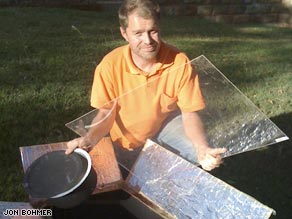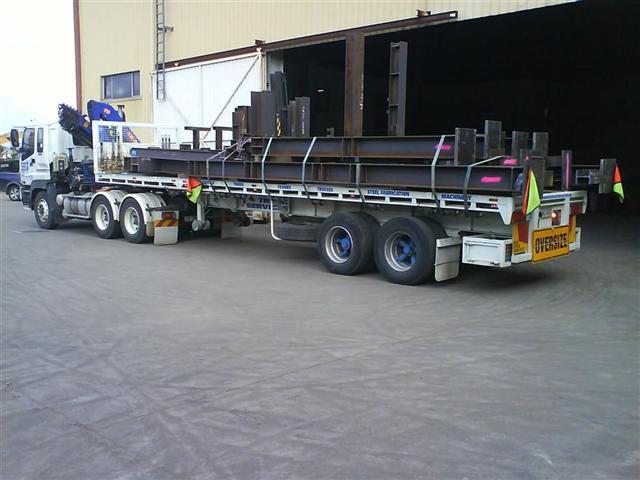this is how they respond. They lie. They spend a lot of money and hope the World Goes away:
http://www.youtube.com/watch?v=hTKeo4w7npA
or maybe it sounds like this:
http://www.youtube.com/watch?v=OFE0C_5gtzE
or this original:
http://www.youtube.com/watch?v=1_1TqRgPbTI
But it usually looks like this:
http://www.usatoday.com/money/autos/2009-04-14-big-cars-safer_N.htm
Crash tests show small car ratings are misleading
By James R. Healey, USA TODAY
Buyers choosing the smallest cars for low price and high gas mileage could be endangering themselves and their passengers, says a major auto-safety researcher.
In new crash tests, the Insurance Institute for Highway Safety rammed three automakers’ smallest cars into their midsize models. Although the small cars had passed other IIHS tests, they flunked in collisions with larger but still-fuel-efficient sedans. “The safety trade-offs are clear,” IIHS President Adrian Lund says. “There are healthier ways to save gas.”
IIHS, funded by auto insurers, usually crashes cars into stationary barriers at 40 miles per hour. This time, it was car into car, each going 40 mph.
Barrier tests, in effect, show how a car holds up crashing into one like itself, Lund says. These tests show colliding with a larger car at the same effective speed as the barrier test.
IIHS picked three small cars that got its top rating of “good” in barrier tests. In these tests, they fell to “poor” The report comes as small cars take a larger share of U.S. new-vehicle sales. While R.L. Polk registrations show 13.8% of vehicles on the road are classed “small cars,” their share of new-car sales rose from 14.5% in 2006 to 18.1% last year, says Autodata.
:}
But wait later in the article:
Dave Schembri, president of Smart, says, “If you carry this to the nth degree, we’d all be driving 18-wheelers.” And, he says, fewer than 1% of crashes are as violent as the IIHS test.
Lund says the car vs. car tests are meant to mimic killer crashes, not fender benders. He also says that the only difference between the barrier test, in which Smart got a “good,” and the latest test is the size of the obstacle the Smart ran into.
Cynthia Sholander. of Fairfax, Va., praises Smart. She survived a horrific rear-end crash last October that sent her Smart sailing off Interstate 95, into trees, then bouncing back. Sholander says she suffered a concussion but no other injuries.
:}
The point here is they PUT THE CARS THROUGH TESTS THEY NEVER PERFORM.
Fact is roughly 37,000 people die in cars every year. This has been true since the mid 1960’s. Do you find this shocking? You should. That is again roughly 3,000 deaths a month. Even with the use of seat belts and airbags. Why? Because there are millions more drivers and cars then back then and the increase of large long and short haul trucks. But to slam a much larger vehicle into a much smaller vehicle head on and then “tut tut” that the smaller cars are more dangerous is just dumb. Top that off with Walter Williams and Robert Novak trembling on about the destruction they cause and you can tell the state of emotional alarmism echoing around the far right. That is until Novak ran over a pedestrian with his Corvette for God’s sake. The truth is:
http://en.wikipedia.org/wiki/Head-on_collision
Road transport
Head-on collisions are an often fatal type of road traffic accident. U.S. statistics show that in 2005, head-on crashes were only 2.0% of all crashes, yet accounted for 10.1% of US fatal crashes. This over-representation is because the relative velocities of vehicles traveling in opposite directions is high. A head-on crash between two vehicles traveling at 50 mph is comparable to a vehicle traveling at 100 mph striking a stationary vehicle.
Head-on collisions, sideswipes, and run-off-road crashes all belong to a category of crashes called lane-departure or road-departure crashes. This is because they have similar causes, if different consequences. The driver of a vehicle fails to stay centered in their lane, and either leaves the roadway, or crosses the centerline, possibly resulting in a head-on or sideswipe collision, or, if the vehicle avoids oncoming traffic, a run-off-road crash on the far side of the road.
Preventive measures include traffic signs and road surface markings to help guide drivers through curves, as well as separating opposing lanes of traffic with wide central reservation (or median) and median barriers to prevent crossover incidents. Median barriers are physical barriers between the lanes of traffic, such as concrete barriers or wire rope safety barrier. These are actually roadside hazards in their own right, but on high speed roads, the severity of a collision with a median barrier is usually lower than the severity of a head-on crash.
The European Road Assessment Programme‘s Road Protection Score (RPS) is based on a schedule of detailed road design elements that correspond to each of the four main crash types, including head-on collisions. The Head-on Crash element of the RPS measures how well traffic lanes are separated. Motorways generally have crash protection features in harmony with the high speeds allowed. The Star Rating results show that motorways generally score well with a typical 4-star rating even though their permitted speeds are the highest on the network. But results from Star Rating research in Britain, Germany, the Netherlands and Sweden have shown that there is a pressing need to find better median, run-off and junction protection at reasonable cost on single carriageway roads.
:}
So what are they afraid of and what are they spending billions to avoid? The “old car warrior”:
http://www.commondreams.org/views02/0809-06.htm
|
Published on Friday, August 9, 2002 by CommonDreams.org |
|
The Quest for the Fuel Efficient Car |
By Ralph Nader
Once again the Congressional toadies for the auto industry have beaten back efforts by legislators such as Democrat, Senator John Kerry and Republican John McCain to gradually increase fuel efficiency standards from the abysmally wasteful levels now inflicted on your pocketbook. Instead of choosing the path of reduced pollution, consumer savings, efficiency of engines and less reliance on imported oil, these indentured lawmakers turned their back on automotive engineers who know how to do the job but are not allowed by their bosses.
The Sierra Club has decided to stop spinning its wheels on Capitol Hill and go directly to the people. In surveys of likely voters in Missouri and South Dakota, 79 percent of the people wanted the auto industry to be required to increase fuel efficiency and that included light truck owners. The voters do not buy the auto company propaganda that more fuel efficient vehicles means less safety. Sixty percent of these voters say they would pay more for a higher mileage vehicle in return for its much larger dollar savings.
Long time car owners know that fuel efficiency overall is no better than what vehicles did in 1980! They are wary of the sudden spikes in gasoline prices. They also know that the companies spend lots of money on engine hyper-performance rather than on engine hyper-efficiency. Despite massive advertising by the auto companies to the contrary, they do not believe them.
Bolstered by public opinion, the Sierra Club announced a three year campaign to pressure automakers to improve fuel economy. Executive Director, Carl Pope, said “The technology exists today to allow the automakers to continue offering their most popular models, but with significantly improved fuel economy. These new safe, fuel-saving SUVs and pickups could be on the shelf very soon.” (see www.sierraclub.org for specific examples)
The Sierra Club is publicizing a “Freedom Option Package”, which is a set of fuel-saving components that could be added to most standard models and that, taken together, could put the fleets of the Big Three on the road to 40 miles per gallon.
Dan Becker, the Club’s Clean Energy director says that “Detroit wants to sell option packages featuring seat warmers and cup holders” instead. He is mobilizing the Club’s 700,000 members across the country to hold events at local auto dealers. Becker has enlisted a prominent Chevrolet dealer, Chuck Frank in support of this initiative.
The Sierra Club, once enthralled by Bill Ford’s environmental statements and assurances of major increases in Ford’s SUV’s is now so disappointed with his company’s joining the other auto giants to lobby against fuel-efficiency laws that it has singled him and Ford Motor Company for special pressure by motorists.
Soon to come (September 17th) is the most jolting book against the auto company executives since Unsafe at Any Speed came out in 1965. I am referring to New York Times reporter, Keith Bradsher’s devastating expose of the SUVs which he calls the world’s most dangerous vehicles and how they got that way. Titled The High and Mighty, this book explains how the auto industry’s grip on Congress got these SUVs (hoked-up, over-priced light truck) exempted form safety, fuel efficiency and pollution requirements that were imposed on automobiles. That was accomplished when these vehicles were a small percentage of overall sales. Now they are a large part of sales; they kill their occupants in roll overs three times the rate of cars; areuniquely dangerous to other motorists and will become more serious when drunks, teenagers, typically the worst drivers on the road, start buying the older used SUVs, Bradsher says.
With an impressive attention to detail and special documentation, Bradsher reports on the enormous advertising money ($10 billion spent since 1990) to deceive their customers and persuade Americans to switch from cars to the very profitable SUVs. While, he declares, “Gas-guzzling SUVs emit one-third more global-warming gases per mile than cars, and up to 5.5 times as much smog-causing nitrogen oxides per mile.”
If the media grasps the importance of this book, September will be a hot month for the high and mighty in Detroit’s executive suites. And long overdue.
:}
I think the automakers are in real trouble.
:}

























